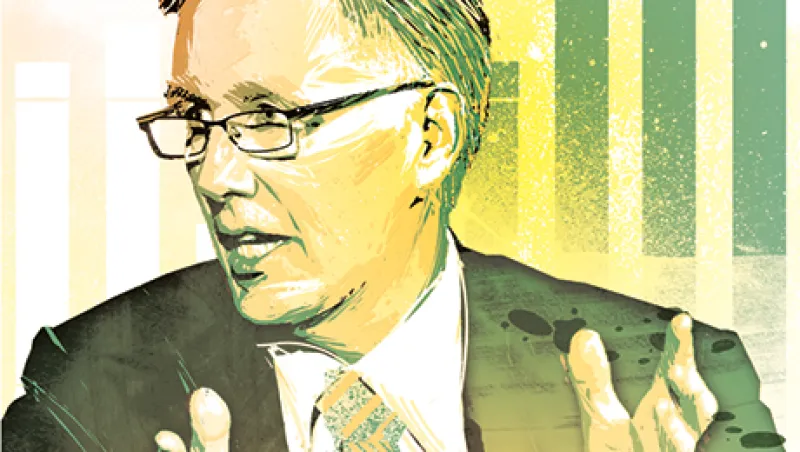Canadian pension executive Jim Leech may be retiring, but he isn’t going quietly. Leech, who steps down as CEO of $130 billion Ontario Teachers’ Pension Plan on December 31, recently published his first book, The Third Rail: Confronting Our Pension Failures. He and co-author Jacquie McNish, a writer with the Globe and Mail newspaper, warn that government, business and labor must work together to redesign and expand pensions that keep the best features of defined benefit plans, which are on the decline in Canada and elsewhere. Canadian efforts to date haven’t filled the retirement income gap, notes Leech, 66. For proof that defined benefit pensions work, he can point to Toronto-based OTPP, which has posted a 10 percent average annual return since its 1990 inception.
Leech’s accessible book cites pension reforms in the Canadian province of New Brunswick, the state of Rhode Island and the Netherlands. In Canada, he writes, adopting defined contribution schemes “would replace a mandatory, efficient system with a fragmented, non-compulsory, expensive and risky savings system that would leave retirees with less income.”
Named CEO in 2007, Leech joined OTPP in 2001 to expand its private equity and infrastructure platform. He’d spent the previous 25 years in business, where he led energy company Union Energy and merchant bank Unicorp Canada. In New York on his book tour, Leech talked to Senior Writer Frances Denmark.
Why this book now?
It came from my observation that the pension debate centered on two things: one, the fruitless debate that you have to have either a defined benefit or defined contribution plan. People weren’t imaginative enough to find a middle ground. And two, the attack on what are perceived as gold-plated defined benefit plans centered on, “You have something I don’t have, so I’m going to tear them down.” Also, I’m not sure politicians really understand it. [New Brunswick Premier David] Alward had been elected on a platform to change all pensions to defined contribution plans. He then came to the conclusion that didn’t make sense.
When did you realize there was a retirement income security problem in Canada?
While working on the asset side at OTPP, I was curious about the liability side. Contributions had long exceeded benefits, but in the early 2000s it switched. I was there watching the plan mature. We now pay C$5 billion ($4.7 billion) in benefits [annually] and receive C$3 billion in contributions. The biggest impact on the asset side was we had to dial back risk, taking equity from 75 percent of the portfolio down to 40 percent. At the same time, there were a lot of studies about whether the plan was sustainable. Almost from my first day as CEO, in 2007, there was a funding deficit.
How did you decide the format for your book?
We didn’t want to write an economic tome to intimidate people. We wanted to write for the educated person who is bewildered and confused. We wanted them to have an entry point into the debate. It started with looking at existing pension plans and how do we make them right. It morphed into what we propose in Canada for the [60 percent of workers] that don’t have pensions. We believe you can find models which have the benefit of a defined benefit and share the risk between employer and employee. In our chapters on New Brunswick, Rhode Island and the Netherlands, that is our conclusion.
What makes the pension debate so difficult?
A lot of pro-pension arguments are lost in this debate because people get carried away. People think that pension money paid out is dead money. In Canada each year, pensioners spend C$60 billion and pay C$16 billion in taxes. Another point: For every dollar paid out, 11 cents is from taxpayers, 11 cents is from employees and the balance is from investment returns. The leverage is phenomenal for the taxpayer. If you dial all that back, your social insurance cost goes up. It would come from general revenue; every dollar increase is going to cost 100 cents versus 11 cents.
What are the chances of successful pension reform?
I’m an optimist. In Canada it’s being talked about. The debate has reached a new level. It’s clear to me that elections will be fought and won on this issue. The government has promulgated it and set up a mechanism, the pooled registered pension plan. But they didn’t go far enough. They didn’t make it mandatory or annuitized or with large enough participant pools. But it wouldn’t take much to make these adjustments.
Starting with the premise that the defined benefit model is the most efficient, least expensive way to deliver financial security, the issue is creating new ways to distribute risk in an appropriate manner. Our belief is the investment risk should be shared among employers, employees and retirees. The benefit can be made conditional on the financial wherewithal of the fund. Another way to improve pension funds would be to pool a number of smaller funds together to benefit from economies of scale and having access to a more diversified set of investments, like real estate, private equity and infrastructure.
Get more on pensions.






